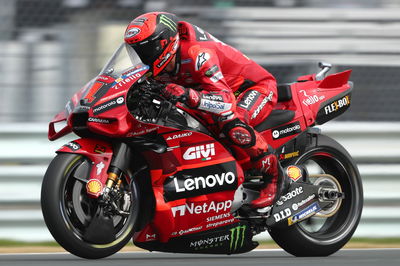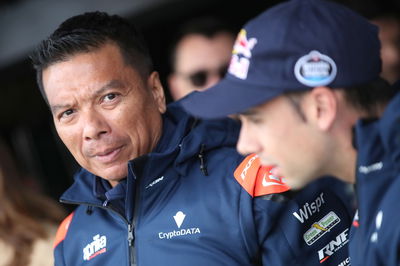Dall’Igna: Use ride-height devices like F1 ‘DRS’ from 2027

But Ducati Corse general manager Gigi Dall’Igna has suggested taking the comparison even further, by turning the lowering system into a specific MotoGP overtaking aid from 2027.
While F1’s DRS (Drag Reduction System) allows a closely following driver to briefly reduce drag on a straight by levelling part of the rear wing, ride-height devices offer a similar speed boost by reducing wheelies onto a straight and lowering drag due to a smaller frontal area. Unlike DRS, their use is unlimited.
The technology was pioneered by Ducati but front ride-height devices are already banned and the rear systems - now used throughout the grid - also look set to face the axe at the end of the current contract cycle with the manufacturers in 2026.
However, with the lack of overtaking currently a hot topic in MotoGP, Dall’Igna feels the premier-class should consider an F1-style approach.
“According to my idea and the idea of Ducati, this [rear] device should be used as a kind of 'overtake system', i.e. for overtaking,” Dall’Igna told Speedweek.com. “For example, you could allow it to be used ten times per race on Sunday, not more."
While such a method could be a particular benefit for those lacking top speed, such as Yamaha, to pass other bikes, it wouldn't help if the rider in front was able to use the system as a form of defence.
F1 solves that issue by only making DRS available to those within one-second of a car in front, rather than giving all drivers an equal number of DRS deployments.
Among the downsides in MotoGP terms is that top speeds are already running at a record level and retaining ride-height devices will make reducing straight-line performance, among the targets for the 2027 rule package, even more difficult.
Mechanical ride height devices are also viewed by many as not being road relevant although others, such as Scott Smart, believe there could be some 'interesting applications' for tall Adventure-style bikes.












